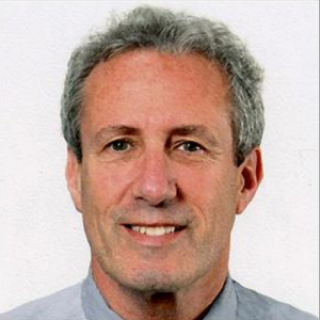
Raising the Bar for Early Education
May 28, 2014
Is early education and care a profession or not? The debate has dogged the field for decades. Positions taken by the workforce and organizations representing their interests seldom come to full agreement in scenarios reminiscent of the “tastes great; less filling” debates. This in-fighting, often played out between public pre-K, Head Start, and child care, does not center around the acknowledged value of the workforce’s intentions, efforts or contributions; rather, it stems from the field’s failure to consider what actually qualifies as a profession and its willingness to take it to the next level. Too often, terms such as “job,” “occupation,” and “career” are used interchangeably with “profession,” only clouding the issue.
Sociologist Byrne Horton (1944) provides an interesting lens to examine the issue. Based on an analysis of characteristics found across professions, his “Ten Criteria or Earmarks of a Genuine Profession”[i]contend, that a profession must:
- Satisfy an indispensable social need and be based upon well established and socially acceptable scientific principles.

- Demand adequate pre-professional and cultural training.
- Demand a body of specialized and systematized knowledge.
- Give evidence of needed skills that the general public does not possess.
- Have developed a scientific technique that is the result of tested experience.
- Require the exercise of discretion and judgment as to the time and manner of the performance of duty .
- Be a type of beneficial work, the result of which is not subject to standardization in terms of unit performance or time element.
- Have a group consciousness designed to extend scientific knowledge in technical language.
- Have sufficient self-impelling power to retain its members throughout life. It must not be used for a mere steppingstone to other occupations.
- Recognize its obligations to society by insisting that its members live up to an established and accepted code of ethics.
Other sociologists and scholars (Katz, 1985; Moore, 1970; Rich, 1984) have echoed Horton’s criteria.
Obviously, for early childhood teachers, we can check off some of the above. The commitment to expanding a scientific knowledge base for early education is burgeoning and the work addresses an indispensable social need. Based on all the criteria, however, I’d be hard-pressed to issue a resounding “Yes” if asked whether the field of early education and care currently qualifies as a profession.
Many of Horton’s criteria, particularly those addressing professional training and knowledge, are not uniformly expected, met, or enforced across our field. In a field where high school graduates lacking adequate pre-professional training or specialized knowledge work immediately and independently on par with others who have invested years in specialized training and degrees, we have a problem. When people enter the field without knowledge and skills beyond that of the general public, we have a problem. With a track record of high attrition confirming our field’s inability to retain its members throughout life – due in part to demanding responsibilities for which they were not prepared and low compensation – we have a problem. Let’s be honest: as a result of a well-meaning effort to open a wide early education and care umbrella inviting all comers with and without qualification, our field fails to meet requisite criteria to be recognized as a profession. The lowest common denominator defines our field and as such we stumble in advancing as a profession. More important, we do a disservice to children, families, and colleagues.
A profession establishes the gate through which only qualified and competent individuals may enter to provide service. We have too many gates lacking uniform standards of quality. The NIEER 2012 State of Preschool Yearbook reported only 30 publicly-funded preschool programs in 25 states require lead teachers to have a BA; New York requires a Master’s degree. Programs in 4 states (Florida, Massachusetts, Texas, one program in Vermont) did not require lead teachers to have either a BA or specialized training in pre-K. Several state-funded pre-K programs operating in partnership with community-based child care programs permit lead teachers to have high school degrees or certificates, creating an uneven professional field within the same state or community. Head Start has made tremendous strides in advancing the qualifications and skills of its teaching corps, surpassing ambitious targets through a combination of policy and support. Alternate pathways are made possible for para-professionals who commit to becoming professionals. Years in the field may provide valuable experience, but if not systematically approached to attain knowledge and skills well beyond those held by the general public, such experience may simply reinforce unprofessional or ineffective behaviors.
In Early Childhood Education for a New Era: Leading for Our Profession, Stacie Goffin portrays early education and care as a field of practice where reform is driven by external and internal forces, arguing that we need to assume responsibility for elevating and accelerating internal change. Speaking at the Maryland Department of Education Research Forum (January 2014), she warned “(v)oluntary strategies (are) not leading to practitioners collectively capable of competent practice” and that change must come from the “inside out.” I agree. As a profession, we must hold ourselves to high standards of excellence and accountability, not justifications for mediocrity. The gauntlet has been thrown.
I would be remiss if I failed to mention the need for adequate resources to elevate early education and care as a profession. Each of Horton’s 10 criteria has an associated price tag if an indispensable social need is to be addressed by knowledgeable, skillful, effective professionals who remain committed and supported throughout their professional lives. Parents cannot be expected to carry the full price any more than we can expect the children. As columnist Thomas Friedman said in a recent interview, “If we will the end, we must also will the means.” States, communities, business, and the federal government need to step up.
Certainly, we are further along the path to being recognized and valued as a profession, but now is not the time to rest. Until the field of early education and care comes to agreement on criteria for its “profession” and commits to meeting exemplary standards differentiating it from a “job” or “occupation,” we are destined to be viewed by the public as a lesser profession and reap commensurate benefits. It’s time for us to raise the bar.
– Jim Squires, Senior Research Fellow
The Authors
About NIEER
The National Institute for Early Education Research (NIEER) at the Graduate School of Education, Rutgers University, New Brunswick, NJ, conducts and disseminates independent research and analysis to inform early childhood education policy.
Suggested Citation
[i]B. J. Horton. (1944). Ten criteria or earmarks of a genuine profession. Scientific Monthly, (58), p. 164.

